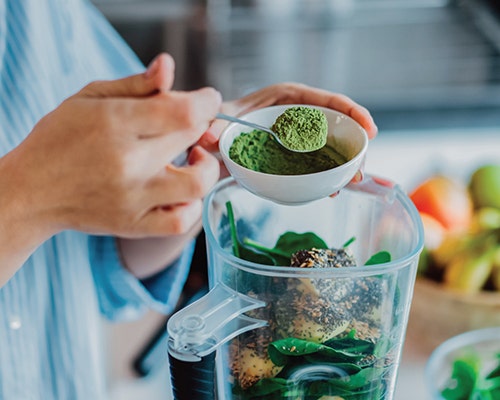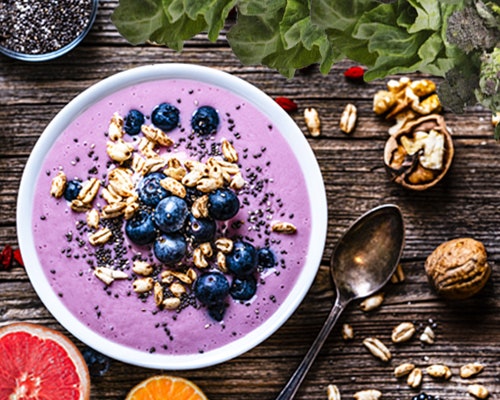Flower Power: Edible Flowers
- 9/6/16
Using flowers in food preparation has roots from thousands of years ago, since the Chinese, Greeks and Romans commonly used flowers in their cooking. It makes sense, too, since flowers can add vibrant color, tasty flavors and aromas. Some are herb-like, some are spicy, while others are fragrant and floral. In fact, you can often find flower petals in salads, teas, as garnish for dessert or even in dessert, such as in homemade ice cream. Spicy flowers can also be used in handmade pasta dough, or floral ones for simple syrup recipes for use in lemonade or other drinks.
And while flowers look so lovely, some are deadly if you try to eat them, so eat only the ones you know can be safely consumed. (Be sure to consult a reference book, if you’re uncertain.) You’ll also want to consume only flowers that you have either grown organically yourself—or at least know that they’re grown organically, since conventional flowers (and those by roadsides) can have pesticides, herbicides or automobile exhaust on them. Likewise, eat only the petals, and remove pistils and stamens prior to consuming.
If you have allergies, be sure to introduce flowers gradually because they can supercharge allergies. Plus, for freshness, place flowers on moist paper towels and refrigerate them in airtight containers—which should keep them useable for up to 10 days.
There are many flowers which are edible, but here are some you may want to try:
Arugula blossoms vary in color from white to yellow with dark purple streaks, and have dark centers and a peppery flavor, like their leaves.
Basil blossoms are available in a variety of colors, including white, pink and lavender, and the flavors is similar to its leaves, only milder.
Calendula (or marigold) blossoms are peppery, tangy and spices, but their vibrant golden color adds appeal to many dishes.
Carnation petals are sweet and have a taste like their sweet aroma.
Chrysanthemum petals are a little bitter, but have a range of colors and flavors—from peppery to pungent.
Clover flowers are sweet but with a hint of licorice.
Dandelion greens provide amazing nutrition—and may occasionally be bitter, but also have a sweet grassiness which balances it out.
Fennel flowers are yellow in color and have a subtle licorice flavor.
Jasmine blooms are highly fragrant and often used in tea or sparingly in sweet dishes.
Lilac blooms have a citrusy, floral aroma and flavor.
Mint flowers are edible and have a pleasant taste; some members of the mint family flowers’ colors can range from bright red to purple to pink.
Oregano flowers are a decorative, subtle version of the leaf.
Rosemary flowers offer s milder version of the herb and go nicely as garnishes on dishes using rosemary.
Sunflower petals can be consumed, while the bud should be steamed like an artichoke.
Violets are sweet florals and work well as garnishes; you can also use the flowers in salads and to garnish desserts and drinks.
So, go ahead and add a little flower power flavor to your foods! In fact, take a peek at Chef Gwen’s Edible Flower Salad recipe to get you started!
And while flowers look so lovely, some are deadly if you try to eat them, so eat only the ones you know can be safely consumed. (Be sure to consult a reference book, if you’re uncertain.) You’ll also want to consume only flowers that you have either grown organically yourself—or at least know that they’re grown organically, since conventional flowers (and those by roadsides) can have pesticides, herbicides or automobile exhaust on them. Likewise, eat only the petals, and remove pistils and stamens prior to consuming.
If you have allergies, be sure to introduce flowers gradually because they can supercharge allergies. Plus, for freshness, place flowers on moist paper towels and refrigerate them in airtight containers—which should keep them useable for up to 10 days.
There are many flowers which are edible, but here are some you may want to try:
Arugula blossoms vary in color from white to yellow with dark purple streaks, and have dark centers and a peppery flavor, like their leaves.
Basil blossoms are available in a variety of colors, including white, pink and lavender, and the flavors is similar to its leaves, only milder.
Calendula (or marigold) blossoms are peppery, tangy and spices, but their vibrant golden color adds appeal to many dishes.
Carnation petals are sweet and have a taste like their sweet aroma.
Chrysanthemum petals are a little bitter, but have a range of colors and flavors—from peppery to pungent.
Clover flowers are sweet but with a hint of licorice.
Dandelion greens provide amazing nutrition—and may occasionally be bitter, but also have a sweet grassiness which balances it out.
Fennel flowers are yellow in color and have a subtle licorice flavor.
Jasmine blooms are highly fragrant and often used in tea or sparingly in sweet dishes.
Lilac blooms have a citrusy, floral aroma and flavor.
Mint flowers are edible and have a pleasant taste; some members of the mint family flowers’ colors can range from bright red to purple to pink.
Oregano flowers are a decorative, subtle version of the leaf.
Rosemary flowers offer s milder version of the herb and go nicely as garnishes on dishes using rosemary.
Sunflower petals can be consumed, while the bud should be steamed like an artichoke.
Violets are sweet florals and work well as garnishes; you can also use the flowers in salads and to garnish desserts and drinks.
So, go ahead and add a little flower power flavor to your foods! In fact, take a peek at Chef Gwen’s Edible Flower Salad recipe to get you started!




